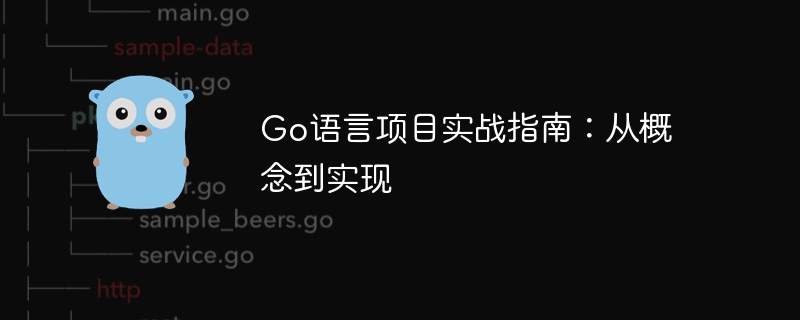Home >Backend Development >Golang >A practical guide to Go language projects: from concept to implementation
A practical guide to Go language projects: from concept to implementation
- WBOYWBOYWBOYWBOYWBOYWBOYWBOYWBOYWBOYWBOYWBOYWBOYWBOriginal
- 2024-03-22 14:15:03540browse

Title: Go Language Project Practical Guide: From Concept to Implementation
With the continuous development of Internet technology, Go language is an efficient, concise and powerful concurrency The programming language is favored by more and more developers. The Go language's fast learning curve and rich standard library make it ideal for building a variety of applications. This article will provide a practical guide for Go language projects, from concept to implementation, and specific code examples to help readers better master Go language development skills.
Part One: Project Preparation and Environment Setup
Before starting a Go language project, you must first prepare the corresponding development environment. It is recommended to use VSCode, the editor officially recommended by the Go language, and install the Go plug-in to facilitate development.
Next, we need to create a new Go project. You can create a new Go module by running the following command:
go mod init 项目名
This will create a new Go module in the current directory to manage the project's dependency packages.
Part 2: Project Concept and Design
Before you start writing code, you must first clarify the concept and design of the project. Suppose we want to create a simple ToDo application for managing task lists. We need to consider the following aspects of design:
- Data structure: Task list items need to contain information such as task name, completion status, etc.
- Functional design: including functions such as adding tasks, deleting tasks, marking tasks as completed, etc.
- User interface design: Consider how to display task list information to users.
After clarifying the concept and design of the project, we can start writing code.
Part 3: Specific code implementation
- Create task structure:
type Task struct {
Name string
Completed bool
}- Create task manager Structure:
type TaskManager struct {
tasks []Task
}- Add task method:
func (tm *TaskManager) AddTask(name string) {
task := Task{Name: name, Completed: false}
tm.tasks = append(tm.tasks, task)
}- Display task list method:
func (tm *TaskManager) DisplayTasks() {
for i, task := range tm.tasks {
fmt.Printf("%d. %s - 完成状态: %v
", i+1, task.Name, task.Completed)
}
}Pass the above Code example, we implement the core functions of a simple ToDo application. Readers can expand and optimize functions according to their own needs.
Part 4: Project Testing and Operation
After writing the code, we need to test to ensure the correctness of the code. You can use the testing tools that come with the Go language to write test cases and run tests. Run the following command in the project directory to test:
go test
If the test passes, it means that the project code is correct.
Finally, we can run the project with the following command:
go run main.go
This will compile and run our Go application and display the task list to the user.
Through the guide of this article, readers can better understand how to conduct a practical Go language project, from concept to implementation, and use specific code examples to help readers better master Go language development skills. I hope this article will be helpful to readers who are learning Go language!
The above is the detailed content of A practical guide to Go language projects: from concept to implementation. For more information, please follow other related articles on the PHP Chinese website!

